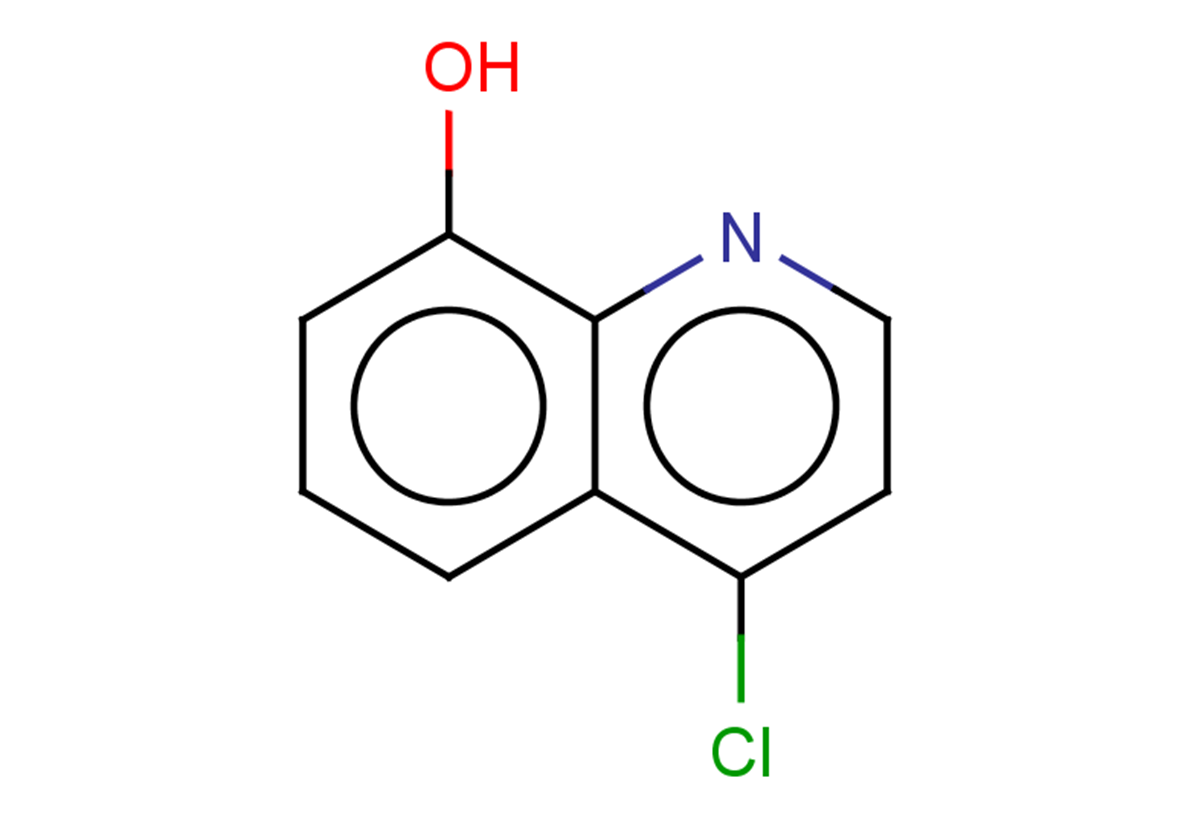
4-Chloroquinolin-8-ol
CAS No. 57334-36-8
4-Chloroquinolin-8-ol( —— )
Catalog No. M24564 CAS No. 57334-36-8
4-Chloroquinolin-8-ol is a building block.
Purity : >98% (HPLC)
 COA
COA
 Datasheet
Datasheet
 HNMR
HNMR
 HPLC
HPLC
 MSDS
MSDS
 Handing Instructions
Handing Instructions
| Size | Price / USD | Stock | Quantity |
| 2MG | 68 | In Stock |


|
| 5MG | 88 | In Stock |


|
| 10MG | 129 | In Stock |


|
| 25MG | 232 | In Stock |


|
| 50MG | 370 | In Stock |


|
| 100MG | 537 | In Stock |


|
| 500MG | 1188 | In Stock |


|
| 1G | Get Quote | In Stock |


|
Biological Information
-
Product Name4-Chloroquinolin-8-ol
-
NoteResearch use only, not for human use.
-
Brief Description4-Chloroquinolin-8-ol is a building block.
-
Description4-Chloroquinolin-8-ol is a building block.
-
In Vitro——
-
In Vivo——
-
Synonyms——
-
PathwayOthers
-
TargetOther Targets
-
Recptorothers
-
Research Area——
-
Indication——
Chemical Information
-
CAS Number57334-36-8
-
Formula Weight179.6
-
Molecular FormulaC9H6ClNO
-
Purity>98% (HPLC)
-
Solubility——
-
SMILESOc(cccc12)c1nccc2Cl
-
Chemical Name——
Shipping & Storage Information
-
Storage(-20℃)
-
ShippingWith Ice Pack
-
Stability≥ 2 years
Reference
molnova catalog



related products
-
ML-178
ML-178 is a chemical compound.
-
Biotin-Obestatin (hu...
Biotin-Obestatin (human)
-
Chloroxylenol
Chloroxylenol (4-chloro-3,5-dimethylphenol) is a broad spectrum antimicrobial chemical compound used to control bacteria, algae, fungi and virus.



 Cart
Cart
 sales@molnova.com
sales@molnova.com


